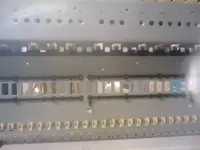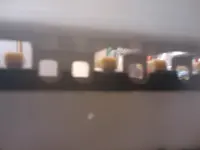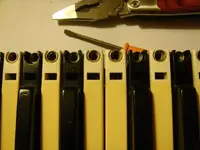S
svenusto
New member
Hi John
Thank you so much for all the info and help... I used the service manual to disassemble the 2600 and I'm glad i did because there are many steps that move in specific sequence that I would have never figured out.. Once I got the key bed out of the unit, everything that you and others have described was exactly as I saw it.. I disassembled all the keys and gave a very thorough cleaning using 99% alcohol to all the contacts and that solved all of the velocity problems... The black semi weighted key ( a bit different that the full hammer action keys) that were giving me a tapping problem was a similar issue in that the enclosure for the weight on most of the black keys were either cracked or completely broken off therefore the weight was actually slipping down and hitting the wood base for the key bed... I used plastic surgery glue and sealed all the cracks and attached all the broken parts and its holding very strong.. I couldnt break them back apart..... In short the k2600 is back together and working like a new keyboard... I think I will open it up again in 4-6 months and see if its all held together.. It was an awesome learning experience and not to mention probably saved hundreds of dollars...
I really want to thank you
Sal
Thank you so much for all the info and help... I used the service manual to disassemble the 2600 and I'm glad i did because there are many steps that move in specific sequence that I would have never figured out.. Once I got the key bed out of the unit, everything that you and others have described was exactly as I saw it.. I disassembled all the keys and gave a very thorough cleaning using 99% alcohol to all the contacts and that solved all of the velocity problems... The black semi weighted key ( a bit different that the full hammer action keys) that were giving me a tapping problem was a similar issue in that the enclosure for the weight on most of the black keys were either cracked or completely broken off therefore the weight was actually slipping down and hitting the wood base for the key bed... I used plastic surgery glue and sealed all the cracks and attached all the broken parts and its holding very strong.. I couldnt break them back apart..... In short the k2600 is back together and working like a new keyboard... I think I will open it up again in 4-6 months and see if its all held together.. It was an awesome learning experience and not to mention probably saved hundreds of dollars...
I really want to thank you
Sal





